Disclaimer: The information presented below is for general informational & educational purposes only. Always consult with animal professionals in case of specific concerns.
Webbed feet are a special body part found in mammals, amphibians, and birds.
Webbed-foot animals are either fully- or semi-aquatic, which means they are in the waters for many of their lifetimes.
This unique characteristic is present for good reasons, including easy moving, escaping predators, and chasing prey.
Today’s blog will be fun as you can explore the most popular animals with webbed feet and how they take advantage of this feature to survive.
17 Amazing Animals With Webbed Feet
We can find this characteristic in various animals, including amphibians, reptiles, birds, and mammals.
Below are some famous examples of species with specific webbed feet.
Duck

When we start compiling this list, the first animal that pops into our minds is the duck. It is a semi-aquatic bird found in streams, rivers, and ponds.
A webbed feet duck often has an omnivorous diet consisting of plant-based and meat food, like tiny invertebrates, grasses, and aquatic plants.
Ducks’ limbs are the most popular sort of webbed feet called palmate feet. This unique feature is part of their daily activities: regulating the body temperature, walking, and swimming.
Since ducks spend a lot of time in the water, their limbs are a useful swimming and steering tool.
American Bullfrog
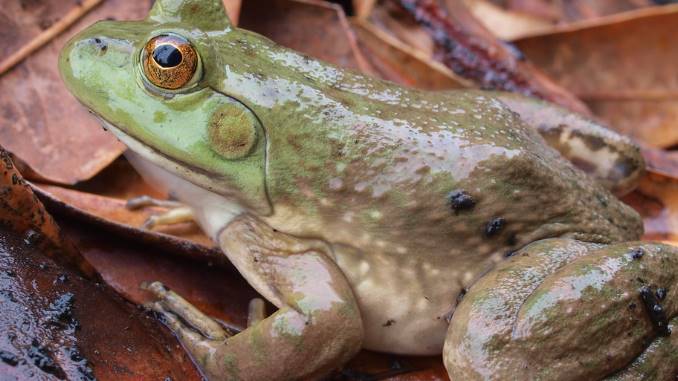
American bullfrogs, whose scientific name is Rana catesbeiana, originate from North America. People used to think this amphibian was extinct, and it used to be misidentified for a long time.
The webbing adaption was initially for easier movement on land. Today, this unique feature symbolizes power and strength.
Besides, the connected toes allow bullfrogs to jump farther and higher than other creatures without affecting speed. Thus, they can swim, climb trees faster, and run away from frog predators easily.
Eastern Mole
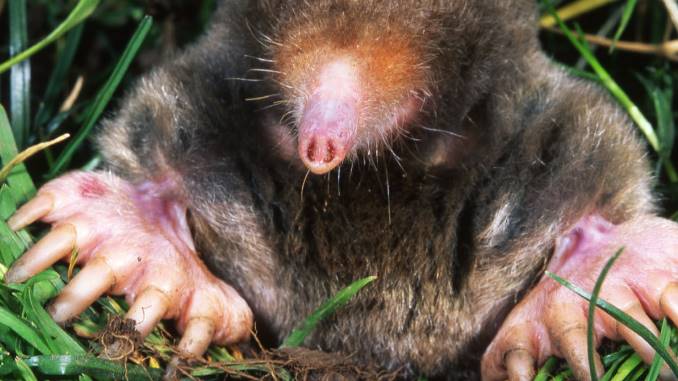
The Eastern mole, or Scalopus aquatics, is a common mole with grayish-brown hair living under the soil with short eyesight.
The average length of an Eastern mole is 6.3 inches, including the short tail of 1.2 inches.
This species’s front feet are specifically for digging instead of developing for water purposes like other animals with connected toes.
They are face sideways, large, spade-shaped, and have attached toes helping move dirt when the animal digs burrows. Surprisingly, it can dig up to six miles an hour in particular soils.
Pelican Swan
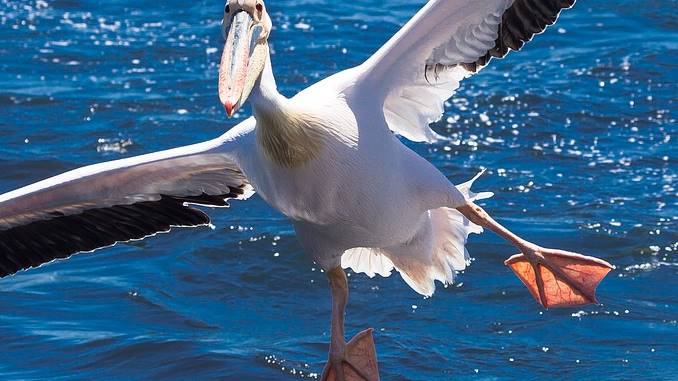
Pelican swans are large webbed feet birds with a sizable wingspan, throat pouch, and long beak. They spend a lot of time on tiny unpopulated islands, catching their favorite seafood – fish.
Notably, pelicans usually hunt in nicely cooperative groups. For example, a group of 20 birds forms a ‘C’ or ‘U’ shape and school fish when approaching shallow water.
Though pelicans appear clumsy and awkward on land, they become a master and way more natural once in water. Thanks to the webbed limbs, they can take advantage of their excellent swimming skills.
Unlike ducks and geese, pelican swans have all toes connected with the skin piece, called totipalmate feet.
Goose

Since geese often move on water, their connected toes evolved, fusing into a unit known as a phalanx. Thus, they can move on water or land effortlessly without sinking.
People call the webbing skin between the animal’s toes an epidermis. It prevents pressure and friction from harming the skin, providing grip when moving in slippery areas.
Common Frog
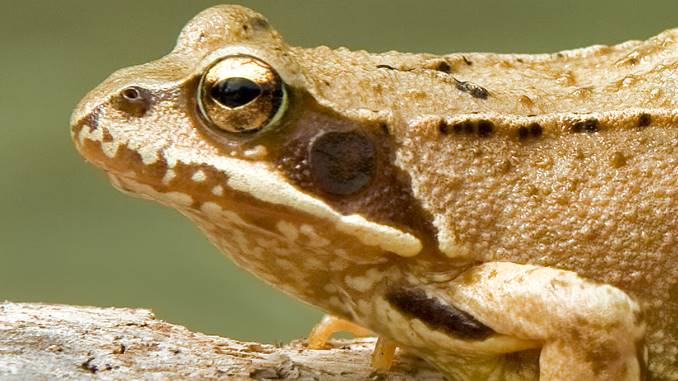
Rana temporaria is a webbed feet frog commonly found anywhere on Earth yet native to Europe.
The average length of a common frog’s body is about 2.4-3.5 inches. Its color can be olive-brown, olive-green, brown, or grayish-brown.
The joint toes and powerful, long legs enable it to swim effectively and jump far. You can often see semi-aquatic frogs in damp areas near ponds or marshes.
Females also give birth in water, typically in huge clusters of 1,000-2,000 eggs floating near the water surface.
Flamingo
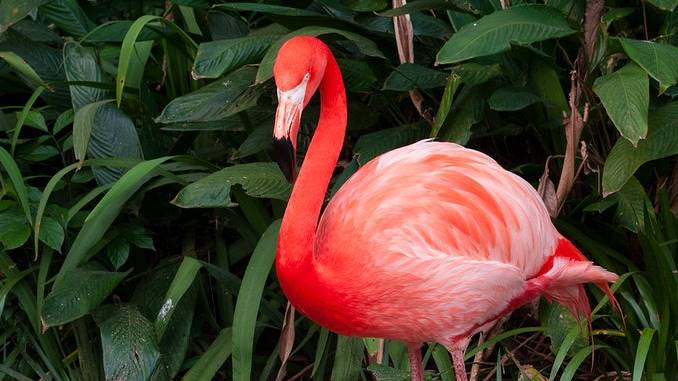
Next is one of our top favorite webbed feet animals: the flamingo. We love it because of its beautiful, stunning appearance.
American flamingos, whose scientific name is Phoenicopterus Ruber, are large and originate from North America. Though they are popular in South and Central America, you can see them in South Florida and Louisiana.
Among other birds with long legs, the special thing about flamingo is that it stands on only one limb in shallow water. The joint toes allow it to survive soft mud environments without sinking.
Platypus

A pretty strange creature that swims like a fish but looks like a duck is the platypus. This name originates from a Greek word implying ‘flat foot.’ So, what makes it so special?
Platypuses are mammals originating from Australia. Though they look like echidnas, they don’t have any spines but a furry, soft tail. Notably, their hair features white stripes and black spots – unique patterns!
Each of the two feet includes four toes, not five as in other species. This feature helps them walk more easily on slipper water surfaces with a better grip.
The abnormal foot developed over time. Sometimes, platypuses can’t move on land with stability. However, they are experts when it comes to moving in the water.
People also call them duckbill platypuses due to their bill-like snout. Despite spending a lot of time underwater, they appear on land to catch worms and insects at night.
Penguin

Though penguins can not fly, nature makes up for it with fantastic skimming qualities. These unique, awkward birds were born to follow aquatic lifestyles.
70% of a penguin’s life is underwater and in oceans. It only appears on land for molting and breeding.
Its short limbs come with webbed paws, while its wings are similar to swimming flippers.
When swimming, these birds sway their wings just like other birds do when flying. In other words, it feels like they are passing through the water.
Some penguins can swim up to six miles an hour and still survive without breathing for 20 minutes.
Sphynx Cat
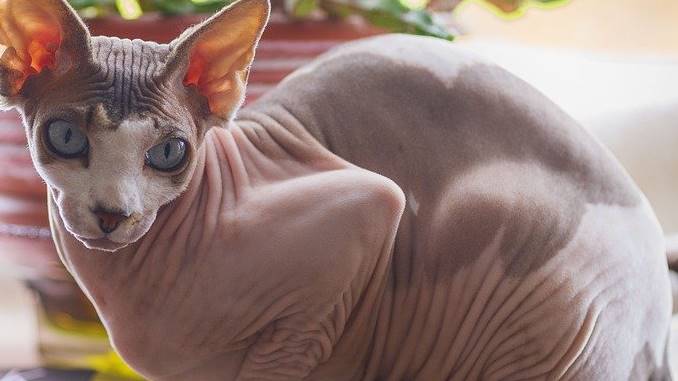
Felis catus is another name for a sphynx cat. While common cats have jointed limbs to catch prey underwater, the sphynx species has a more outstanding webbing.
The special characteristic is the big, extra long hairless body and toes that further emphasize the webbing.
This evolution is popular in wild and larger cats that require a specialized tool to hunt outdoors.
Notably, deprivation of fur is part of a natural-made genetic mutation. Some species feature smooth skin or fine hair with the chamois leather texture.
An average sphynx cat stands 8-10 inches tall and has muscular bodies and large ears.
Beaver

People can easily find beavers in various water habitats as semi-aquatic rodent species. They have to access water around the year for building dams, feeding, and swimming.
We find beavers exceedingly graceful, skilled in the water. They push themselves forward with sizable connected limbs while using their tails as a flexible rudder.
Some research indicated that beavers could swim five miles an hour and survive without breathing for minutes.
These rodents are not violent animals. However, if being threatened, beavers still can be dangerous.
Sea Turtle
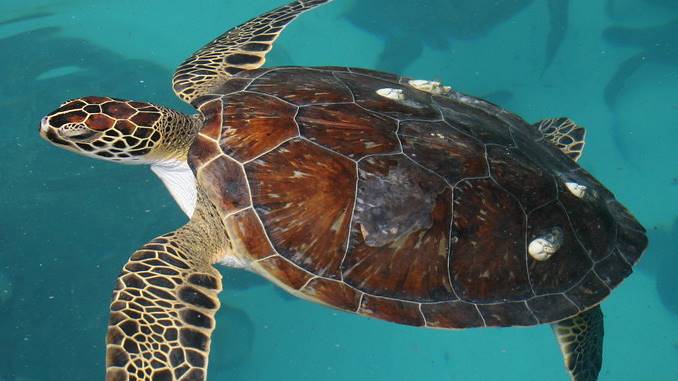
Without referring to turtles, we can’t complete this list of webbed feet animals. Besides the unique limbs, this creature is well-known for being one of the quietest and most slow-moving animals.
Sea turtles have convenient flippers and connected toes, which aid their swimming underwater. This characteristic applies well to their living environments.
A weakness of this species is that it is padded and stumpy on land. Besides, he is not a good swimmer.
So, if you have difficulty distinguishing turtles from tortoises, you know how to now!
Puffin
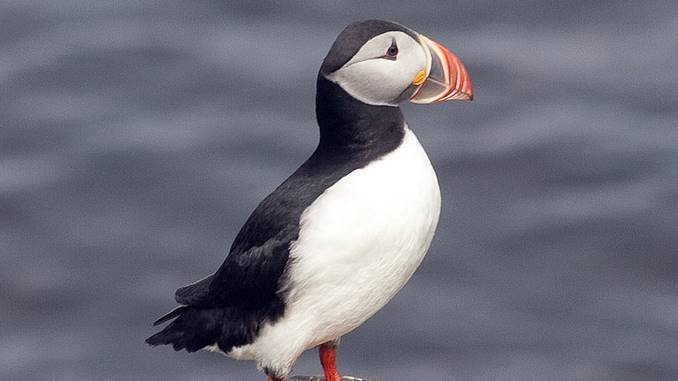
We’re so fond of those cute tiny birds called puffins common on rocky terraces near Scotland’s coast.
They look like penguins in some aspects, yet they don’t dive or swim underwater. Puffins spend most of their time building nests and hunting fish.
The connected toes allow puffins to walk and catch prey along the shoreline without digging their limbs into the soft sand. The unique body part also works when it comes to slippery rocks.
Petrel

Not only webbed feet, but petrels also have connected wings. Isn’t it interesting? Since they have been at sea their whole lives, these birds are adept at walking on water.
Petrels have a medium size, present in tropical seas and oceans all over the globe. A prominent advantage of this seabird is flying over waters without sinking.
How can they do that? Thanks to the unique fur on their two wings known as rectrices. This hair creates life, letting the birds drive the air easily.
Crocodile

As a reptile member of the Crocodylia family, crocodiles (and alligators as well) are present in various tropical regions worldwide.
Crocs have carnivorous diets, including other reptiles, mammals, birds, and fish. The connected limbs enable them to glide through the water and swim effortlessly.
That’s why crocs can hunt prey underwater aggressively and are the fear of numerous underwater creatures.
Related: Do Alligators Make Good Pets?
Capybara
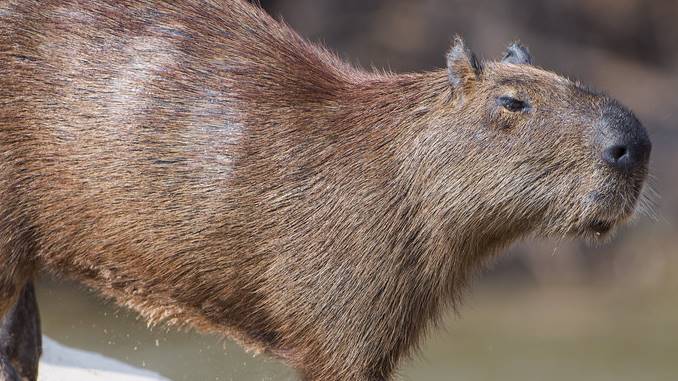
Some call capybaras carpinchos, while others refer to them as water hogs. This rodent is native to South America and is the biggest rodent worldwide.
Typically, a capybara stands at four feet in length and 1.5 feet in height, weighing about 75-150 pounds.
The semi-aquatic creatures inhabit savannas and rainforests by ponds, rivers, or lakes.
They utilize their unique legs to thrive in water and walk on muddy, soft ground without digging their feet into the soil.
Though they mostly live in the wild, capybaras can make good pets to some people.
Sea Otter
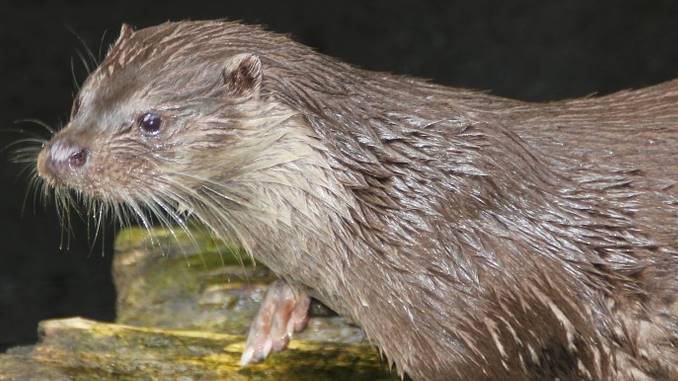
As the name hints, sea otters inhabit coastal waters, mainly areas with rocky sea bottoms or soft sediment.
Most activities of a sea otter occur on the water surface, like grooming themselves, eating, and resting. They float using their backs.
Water environments force them to adapt and evolve water-repellent feathers to stay dry and warm and webbing between toes to dive and swim for food.
FAQ’s
What Are Webbed Feet?
A foot with toes connected to each other is a webbed foot. This specific kind of foot has a piece of skin between the toes, which deters them from moving separately.
In some animals, this piece of skin is very large, making it tricky to distinguish one toe from another. Instead, they appear to adhere to each other.
Some people suppose that this characteristic is webbed toes rather than webbed feet.
Indeed, abnormal toes are a natural adaptation developing in numerous aquatic creatures near or in water and those having to pass through the waters quickly.
Which Bird Has Webbed Feet?
This nifty adaptation often occurs to birds swimming on or under the water surface. It evolved independently in some bird groups.
They’re such a nifty adaptation that they evolved independently in several bird groups.
Geese and ducks fall within this category, and so do boobies, puffins, penguins, pelicans, loons, cormorants, and gulls.
Do Lions Have Webbed Feet?
Not every lion features this abnormality, just like each species has its own stripes and patterns. In fact, sea lions have toes connected, allowing easy swimming.
Do Tigers Have Webbed Feet?
As powerful and excellent swimmers, tigers spend all day long relaxing and waiting to trap prey in rivers, streams, and ponds. They search for water to dive and swim while other cats would avoid it.
Do Springer Spaniels Have Webbed Feet?
All dogs feature various types of webbing between toes, and so do spaniels. Spaniels’ paws have that delicate skin piece (resembles webbing) to help with swimming. We all know that dogs are excellent swimmers, right?
Wrap-Up
Every abnormality or unique characteristic of an animal’s body results from adaptation to the living environment. Creatures’ survival and thriving are all thanks to those natural evolutions.
We’ve taken you through an amazing series of animals with webbed feet. Which name impressed you the most?
Sometimes, it is worth investing time studying things about nature and the animal world. Do you agree?

Hi, my name is John, and I’m an animal lover. I’ve been fascinated with the animal kingdom since I was 5 years old, and my passion keeps growing bigger as I age. And this blog is where I share my researches and passion with animal lovers all around the world.
